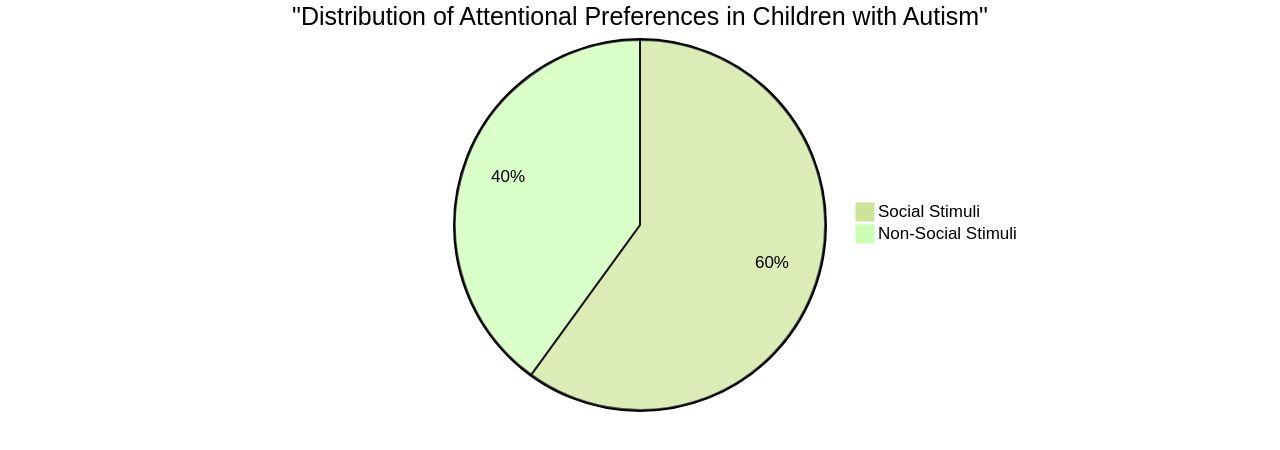Introduction
Autism spectrum disorder (ASD) presents a tapestry of challenges and gifts, unique to each individual it touches. Groundbreaking research has illuminated not only the condition's complexity but also the profound impact that supportive interventions, such as service dogs, can have on those living with autism.
This article explores the latest findings on the benefits of service dogs for children with autism, as well as the cognitive abilities of dogs themselves. It also delves into the broader scientific endeavor to unravel the intricacies of autism and related neurodevelopmental conditions, shedding light on social communication and interaction behaviors, restricted and repetitive behaviors, sensory sensitivities, and the strengths and abilities that individuals with autism possess. Join us as we delve into the fascinating world of autism research and discover how we can better support autistic individuals and their families.
Understanding Autism Characteristics
Autism spectrum disorder (ASD) presents a tapestry of challenges and gifts, unique to each individual it touches. Groundbreaking research has illuminated not only the condition's complexity but also the profound impact that supportive interventions, such as service dogs, can have on those living with autism. A study from Dr. Maggie O'Haire's lab, published in Frontiers of Psychiatry, delves into the experiences of families with children on the autism spectrum, comparing those with a service dog to those awaiting one.
The findings are remarkable, indicating that service dogs bolster not only the child's well-being but also fortify the emotional resilience of the entire family unit, enhancing interactions and bringing joy. Further, a separate study explores the cognitive abilities of a group of dogs known as Gifted Word Learners (GWL), shedding light on their capacity to understand and remember the names of toys. This research, involving a sizable sample of 41 GWL dogs from nine countries, provides insights into how dogs perceive and mentally represent their environment, offering parallels to human language development and cognition.
These studies are part of a broader scientific endeavor to unravel the intricacies of autism and related neurodevelopmental conditions. A team led by UCSF has made strides by mapping the interactions of over 1,000 proteins associated with autism, discovered through innovative technologies such as CRISPR and AI like AlphaFold 2. This research marks a significant leap in understanding the cellular workings of neuropsychiatric disorders and could pave the way for effective therapies.
Statistics reinforce the importance of these findings, revealing that children with both a dog and a cat are less likely to develop allergies, and that early contact with dogs, in particular, can be protective against asthma. Moreover, the positive influence of service dogs on families with autistic children is quantifiable, with a study sample showing a mean service dog placement of nearly four years, highlighting the enduring benefits of such companionship. This convergence of research underscores the significant role that animals, particularly dogs, play in the lives of individuals with autism and their families, offering companionship, emotional support, and a bridge to better understanding complex human conditions.
Social Communication and Interaction Behaviors
Autism spectrum disorder (ASD) is a complex condition that affects an individual's ability to interact socially and communicate effectively. Research conducted by the University of Geneva has shed light on the nuances of social attention in children with autism. Unlike their typically developing peers who naturally gravitate towards social stimuli like faces and interactions, children with autism display a unique developmental trajectory, often finding non-social stimuli such as textures or geometric shapes more engaging.
This divergence in attentional preferences suggests the need for early interventions to enhance social attention, thereby helping children with autism integrate better with their environment and peers. According to the Centers for Disease Control and Prevention, approximately 1 in 36 children are diagnosed with autism, presenting challenges in social, communication, and behavioral aspects. The Autism Welcoming Initiative aims to create inclusive environments where individuals with autism can feel accepted without judgment or sensory overload.
Such initiatives highlight the importance of understanding and accommodating the distinct social communication barriers faced by individuals with autism. Evidence points to the potential benefits of a strengths-based approach to autism, focusing on inherent capabilities such as exceptional memory and attention to detail. By recognizing the individual strengths of those with autism, we can foster an environment where they can thrive and contribute meaningfully.
Moreover, understanding the social experiences of autistic individuals, such as their preference for authenticity in interactions, can guide us towards more effective support strategies. Statistics indicate that young adults with autism value the role of technology in establishing social connections, illuminating the potential for computer-mediated communication to aid in social competency. With 1 in 45 adults in the U.S. diagnosed with ASD, it becomes increasingly crucial to acknowledge the diverse experiences and needs of this population, including those who may have gone undiagnosed or misdiagnosed.

Restricted and Repetitive Behaviors
Understanding repetitive and fixed behaviors in dogs, such as pacing or excessive licking, may parallel aspects of autism in humans, where individuals may exhibit similar patterns like hand flapping or strict routine adherence. Recognizing these signs is crucial for providing a supportive environment. Notably, a study by Beetz and colleagues revealed that typically developing children with dogs showed lower stress levels, as indicated by salivary cortisol, compared to those without canine support.
This underscores the potential of dogs to assist individuals facing developmental or emotional challenges. Recent research at North Carolina State University has highlighted the interconnectedness of mobility and cognition in senior dogs. Slow walking was identified as a potential indicator of cognitive decline, akin to dementia in humans.
This finding emphasizes the importance of observing physical behaviors as reflections of neurological health. In the context of autism treatment, the Council of Autism Service Providers has updated the guidelines for Applied Behavior Analysis (ABA), underscoring the necessity of high-quality implementation. Furthermore, brain research has shown structural differences in individuals with autism, discounting misconceptions about its causality and pointing towards genetic factors.
Service dogs have been shown to play a significant role in assisting children with autism. A study indicated that the presence of a service dog could lead to a positive shift in family dynamics and support for the child. However, it is crucial to adhere to high standards and accreditation for service dog providers to maximize the benefits for both the child and the dog.
Sensory Sensitivities
Understanding the unique sensory experiences of dogs with autism-like behaviors is crucial for enhancing their quality of life. These dogs may exhibit heightened or diminished reactions to various stimuli such as sounds, visual cues, and textures.
For instance, a dog might be extremely sensitive to the texture of a specific toy or the sound of a vacuum cleaner, leading to behaviors that can significantly influence their daily routine and interactions with their environment. Recent research, including the innovative study conducted by the OHAIRE Group and Canine Companions, highlights the profound impact service dogs can have on the social dynamics of families with autistic members.
The presence of a service dog can not only provide unique support to the child with autism but also foster social connections and reduce feelings of judgment and stigma for the entire family. Moreover, personal accounts and case studies reflect the transformative relationships between dogs and their owners.
For example, PeeWee, a deaf bull terrier mix, showcases how dogs with sensory challenges can thrive with supportive communication methods, such as sign language, from their families. Another touching account involves a Staffordshire bull terrier named Belle who provided invaluable support to her owner with autism during labor, emphasizing the importance of understanding and accommodating a dog's role in emotional support. Research also suggests that dogs can offer significant stress reduction and emotional comfort to children. For example, children with insecure attachment styles have shown lower cortisol levels when supported by a dog, indicating the calming influence dogs can have. In essence, recognizing and adapting to the sensory needs of dogs with autism-like behaviors not only benefits the dogs themselves but also the families and individuals they support, creating a harmonious environment for all.
Strengths and Abilities
The realm of autism is not solely defined by its challenges; it also encompasses a spectrum of strengths that can illuminate the unique capabilities of those within it. Temple Grandin's journey in the cattle industry, where her autism became a secondary consideration to her skills and her gender, serves as a testament to the potential that lies in embracing these strengths.
Her story underscores that autism can encompass a range of abilities, from being 'kind of geeky' to possessing exceptional talents in fields that are vital to our society. Similarly, the achievements of Max Park, the new Rubik's Cube world champion, who was diagnosed with severe autism, demonstrate the remarkable problem-solving and fine motor skills that can accompany this condition.
Park's journey from therapy to setting a world record reveals the extraordinary potential that can be unlocked when individuals with autism are provided with the right opportunities and support. Recent research from Swansea University and other institutions echo Grandin and Park's experiences, advocating for a shift in perspective towards neurodevelopmental conditions like autism.
By celebrating the diverse skills of individuals with these conditions, we can challenge societal stigma and foster better educational and employment outcomes. This includes recognizing enhanced social skills, creativity, resilience, and visual search abilities—skills that are often overlooked when focusing solely on the deficits associated with autism. As Ron Sandison and Dr. Tim Buie suggest, including individuals with autism in social activities and recognizing them as valuable members of our society can help everyone understand that people with autism, like anyone else, desire friendships and have significant contributions to make. By shifting our focus to the strengths-based approach and acknowledging the wide range of capabilities within the autism spectrum, we can empower individuals to live their lives to the fullest, as Anthony Ianni so aptly puts it.

Conclusion
In conclusion, service dogs have a profound impact on individuals with autism and their families. They enhance well-being, fortify emotional resilience, and provide companionship and support.
Understanding social communication barriers and accommodating sensory sensitivities is crucial for creating inclusive environments where individuals with autism can thrive. Recognizing strengths and abilities challenges stigma and fosters better outcomes in education and employment. By embracing supportive interventions, understanding unique developmental trajectories, and celebrating diverse skills, we empower individuals with autism to live their lives to the fullest.




